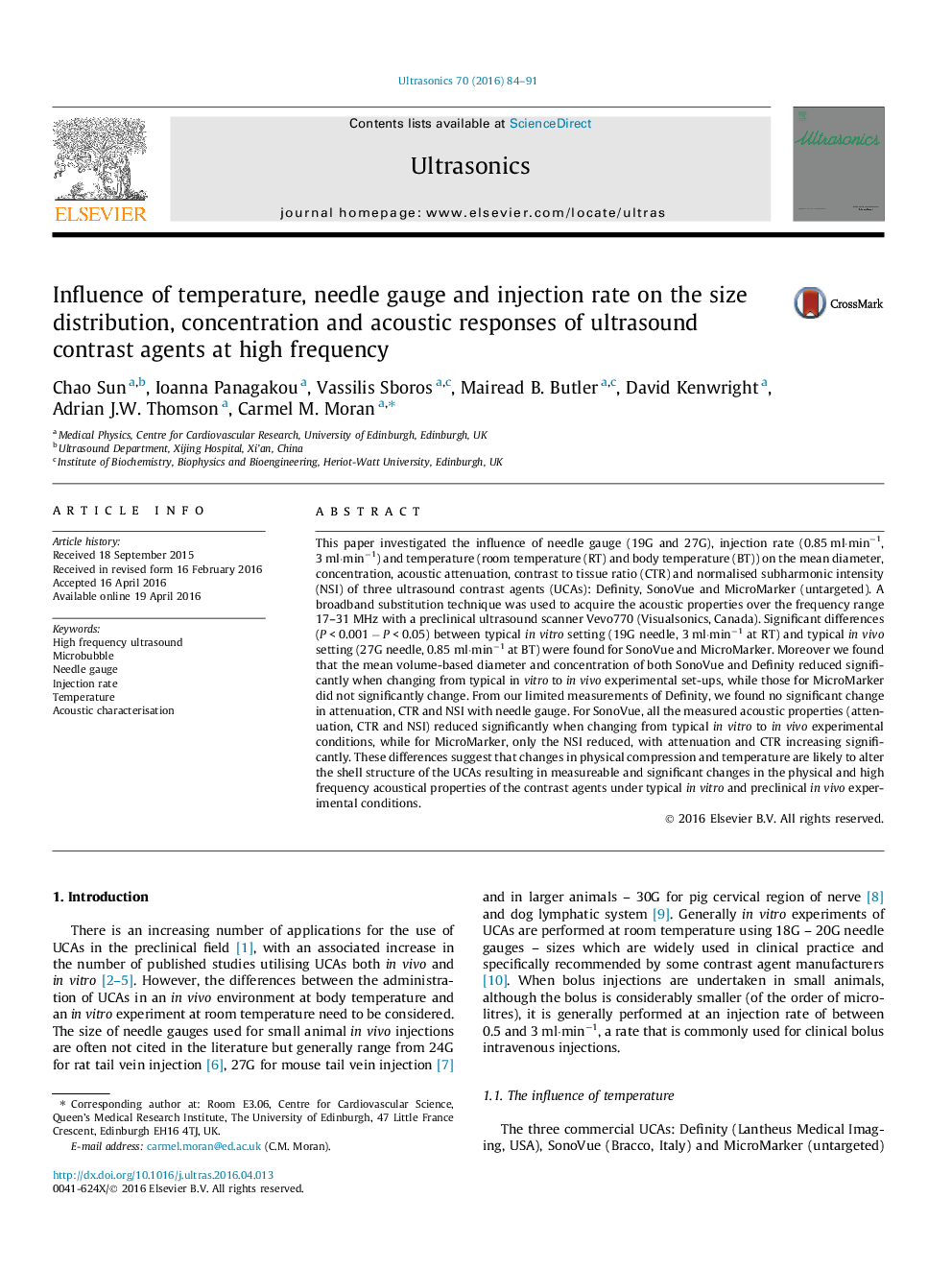| کد مقاله | کد نشریه | سال انتشار | مقاله انگلیسی | نسخه تمام متن |
|---|---|---|---|---|
| 8130219 | 1523199 | 2016 | 8 صفحه PDF | دانلود رایگان |
عنوان انگلیسی مقاله ISI
Influence of temperature, needle gauge and injection rate on the size distribution, concentration and acoustic responses of ultrasound contrast agents at high frequency
ترجمه فارسی عنوان
تأثیر دما، اندازه گیری سوزن و سرعت تزریق در توزیع اندازه، غلظت و پاسخ های صوتی عوامل کنتراست اولتراسوند در فرکانس بالا
دانلود مقاله + سفارش ترجمه
دانلود مقاله ISI انگلیسی
رایگان برای ایرانیان
کلمات کلیدی
اولتراسوند فرکانس بالا، میکروبابابل، سنج سوزن، میزان تزریق، درجه حرارت، خصوصیات آکوستیک،
موضوعات مرتبط
مهندسی و علوم پایه
فیزیک و نجوم
آکوستیک و فرا صوت
چکیده انگلیسی
This paper investigated the influence of needle gauge (19G and 27G), injection rate (0.85 ml·minâ1, 3 ml·minâ1) and temperature (room temperature (RT) and body temperature (BT)) on the mean diameter, concentration, acoustic attenuation, contrast to tissue ratio (CTR) and normalised subharmonic intensity (NSI) of three ultrasound contrast agents (UCAs): Definity, SonoVue and MicroMarker (untargeted). A broadband substitution technique was used to acquire the acoustic properties over the frequency range 17-31 MHz with a preclinical ultrasound scanner Vevo770 (Visualsonics, Canada). Significant differences (P < 0.001 â P < 0.05) between typical in vitro setting (19G needle, 3 ml·minâ1 at RT) and typical in vivo setting (27G needle, 0.85 ml·minâ1 at BT) were found for SonoVue and MicroMarker. Moreover we found that the mean volume-based diameter and concentration of both SonoVue and Definity reduced significantly when changing from typical in vitro to in vivo experimental set-ups, while those for MicroMarker did not significantly change. From our limited measurements of Definity, we found no significant change in attenuation, CTR and NSI with needle gauge. For SonoVue, all the measured acoustic properties (attenuation, CTR and NSI) reduced significantly when changing from typical in vitro to in vivo experimental conditions, while for MicroMarker, only the NSI reduced, with attenuation and CTR increasing significantly. These differences suggest that changes in physical compression and temperature are likely to alter the shell structure of the UCAs resulting in measureable and significant changes in the physical and high frequency acoustical properties of the contrast agents under typical in vitro and preclinical in vivo experimental conditions.
ناشر
Database: Elsevier - ScienceDirect (ساینس دایرکت)
Journal: Ultrasonics - Volume 70, August 2016, Pages 84-91
Journal: Ultrasonics - Volume 70, August 2016, Pages 84-91
نویسندگان
Chao Sun, Ioanna Panagakou, Vassilis Sboros, Mairead B. Butler, David Kenwright, Adrian J.W. Thomson, Carmel M. Moran,
